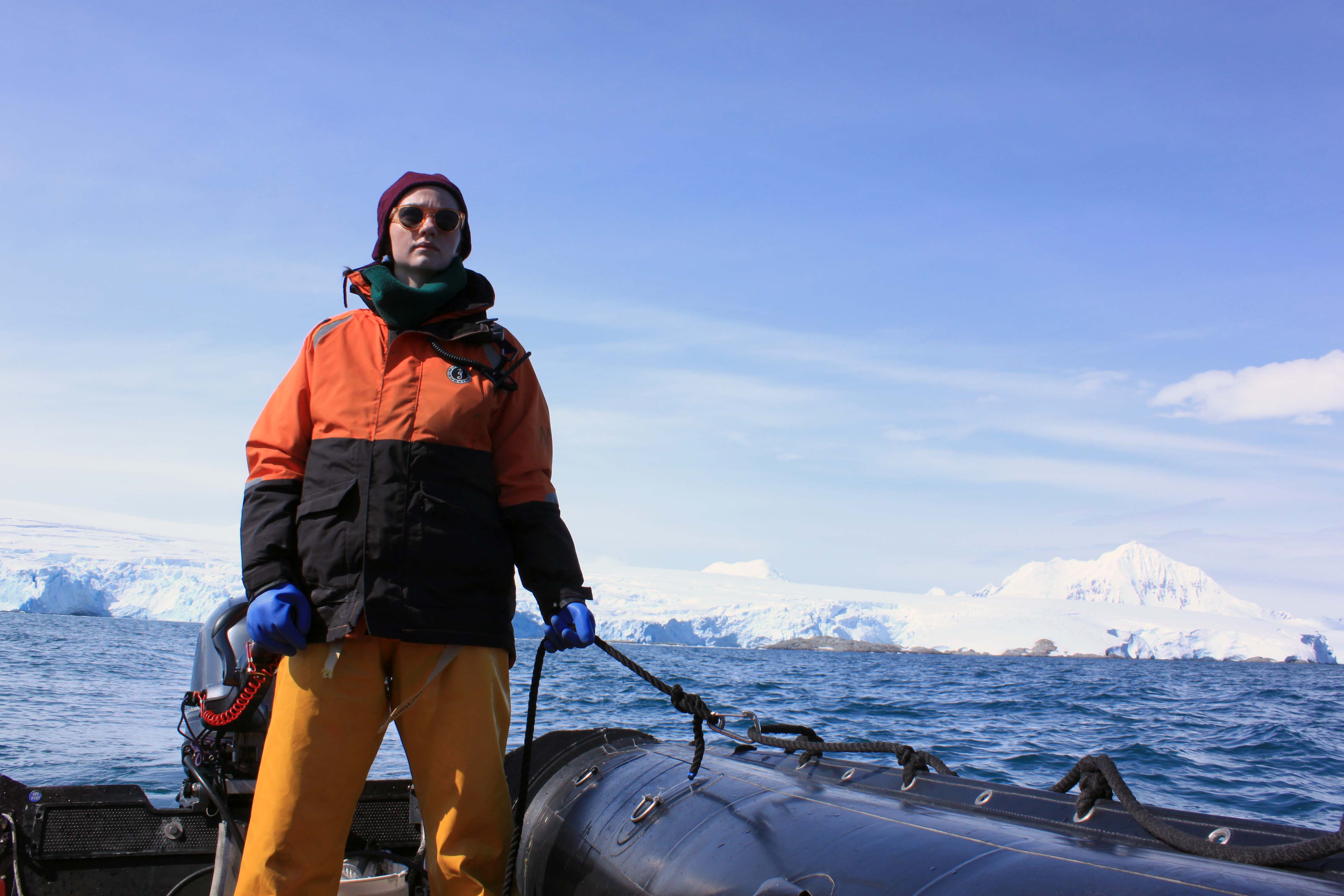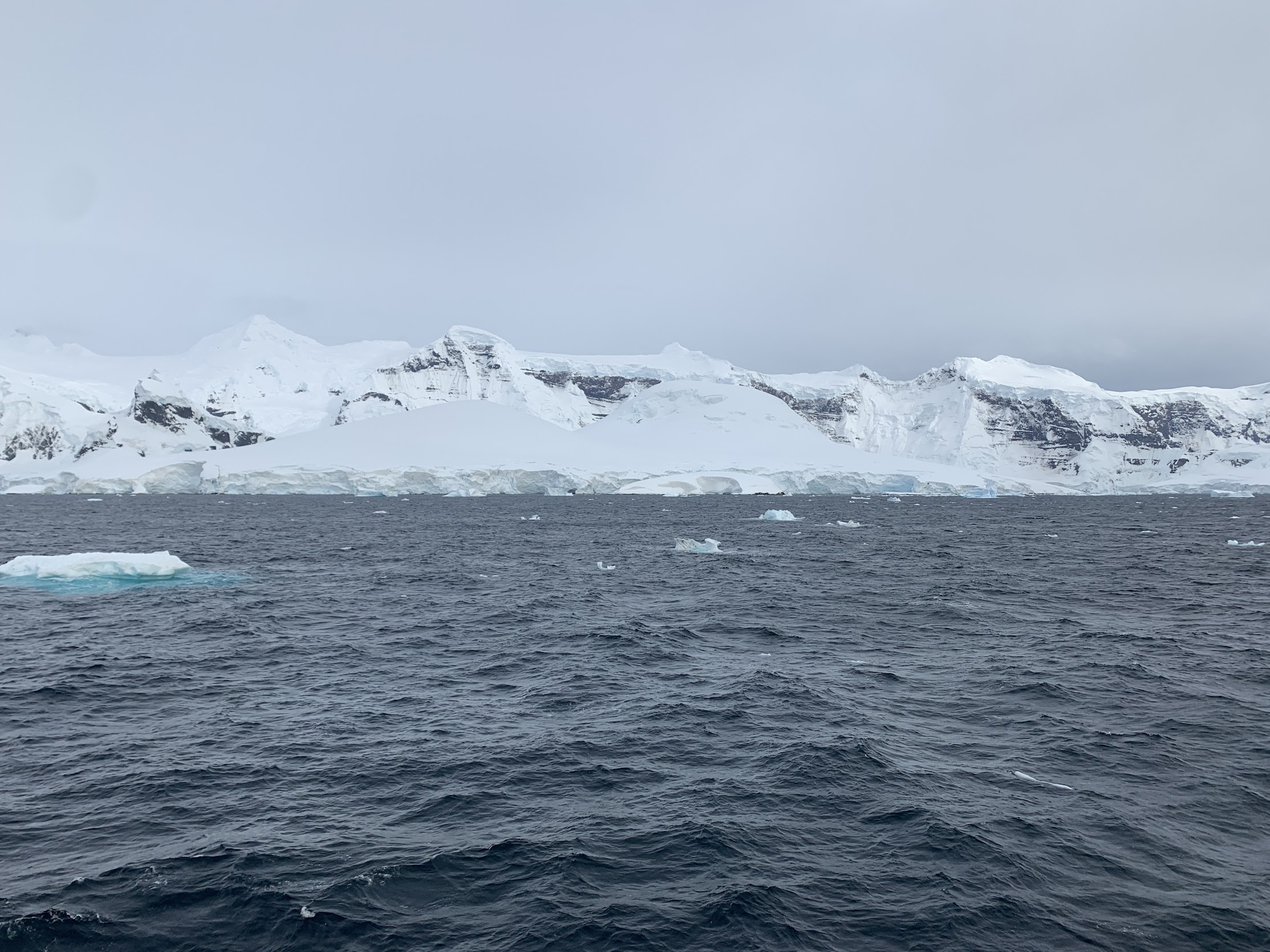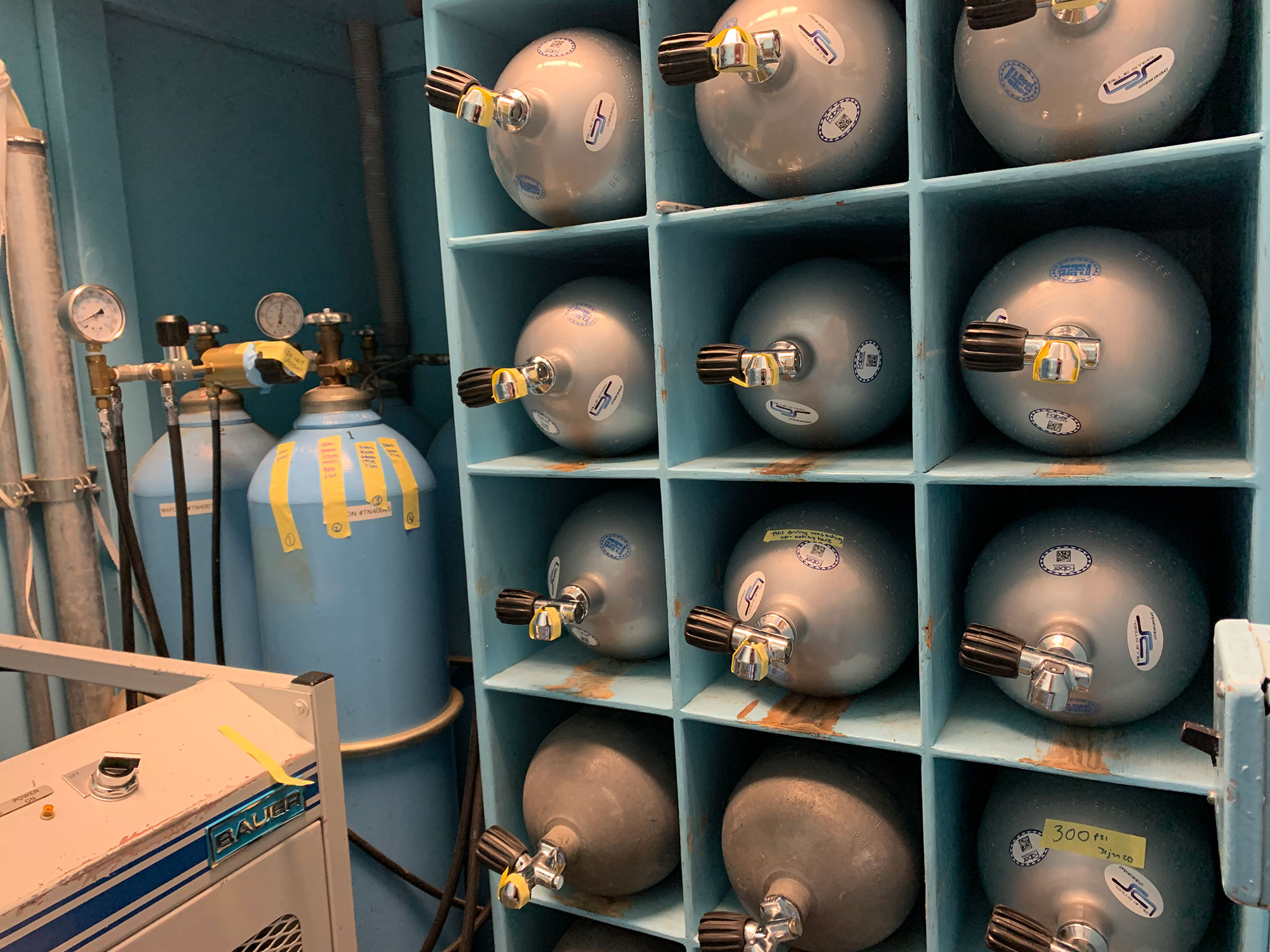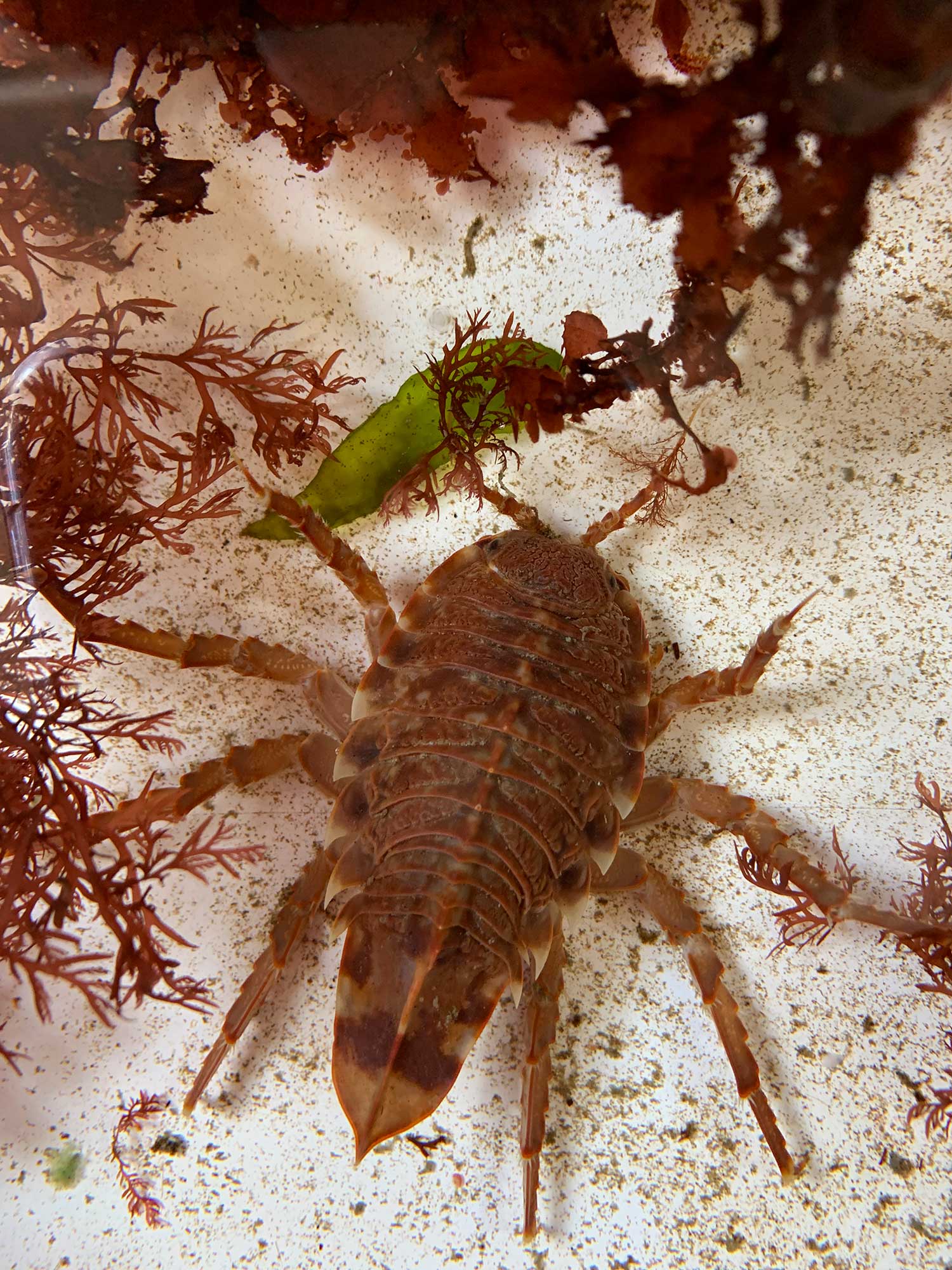 After settling in, the team began preparing for our first dives, and there was a lot for me to learn. We practiced setting up a tent and starting a camp stove in case we could not get back to station due to weather and had to seek refuge on an island. We also learned how to tie various hitches and knots for use on the zodiac boats.
After settling in, the team began preparing for our first dives, and there was a lot for me to learn. We practiced setting up a tent and starting a camp stove in case we could not get back to station due to weather and had to seek refuge on an island. We also learned how to tie various hitches and knots for use on the zodiac boats.
The day after knot and island survival was the most interesting part of the two-day training because we went out on the water. We aired up the zodiac boat and took to the ocean for a practice trip. I got to try controlling the tiller for the first time, and it was a little hard to get the hang of; the waves make the speed of the boat change quickly and unpredictably, and if you let up on the gas the zodiac can stop short and throw everyone and everything forward. There was also a lot of brash ice, which comes from the ice chunks that fall off the glacier, so we had to go slow and try our best to avoid large chunks that could mess up the propeller. We practiced tying up to a landing site, rescuing a dummy (named Ruth) from the water, and started getting familiar with the different islands in the boating area.

Hannah and I in the zodiac followed Chuck and Maggie’s air bubbles around for the 20 or so minutes that they were under and continued to survey the area to make sure no leopard seals were trying to sneak up on us. A group of penguins came and swam around the boat while we were waiting for the divers to come back up, which was very fun to see. Finally, the divers returned to the surface and we slowly approached them with the boat, helped them get the algae and amphipod samples they had collected into buckets of water, and hauled their scuba tanks back into the boat. The divers pulled themselves in, and we were on our way back to station.
After getting back, Hannah and I carried the equipment back to the dive locker and took the newly collected samples to the aquarium room for sorting later. Although the primary goal of the dives is to collect algae and amphipods, we do sometimes pick up interesting by-catch, such as starfish, chitons, nudibranchs, and many more cool sea creatures which you’ll read about in other posts. In the meantime, check out the Antarctic ‘trilobite’ below. It is also called the Antarctic cockroach! Isopods are crustaceans amphipods, crabs and shrimp. This one’s scientific name is Glyptonotus antarcticus.
The amphipods really like to hang onto the algae, so we tried to get them off as gently as possible by swirling cut pieces of algae in a fine mesh bag, taking it out, and repeating several times until most of the amphipods let go and were left swimming in the water. Recently, we have been working to identify the different species to decide which amphipods will be best for the experiment. They can’t be so small they escape through the mesh of the amphipod ‘hotels’, and should preferably also be herbivorous and common enough that we can find plenty to use.
There have been a few difficulties in learning all of the new information and skills I’ll need for the experiment, but it feels really satisfying when we figure out a problem we’ve been struggling with all day or a detail I’ve been having trouble remembering finally sinks in. Stay tuned for more updates on our adventures at Palmer Station!

